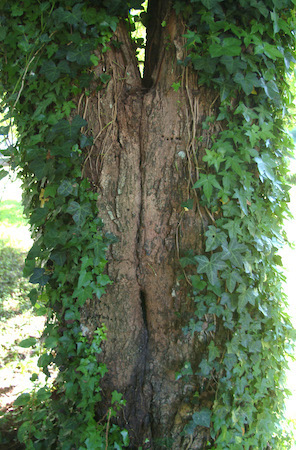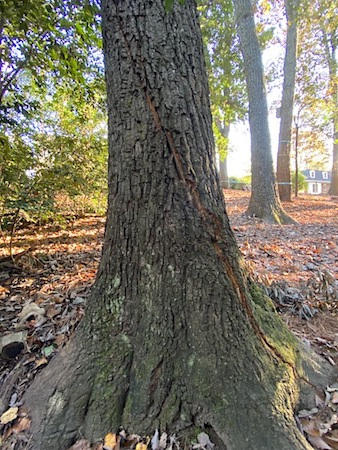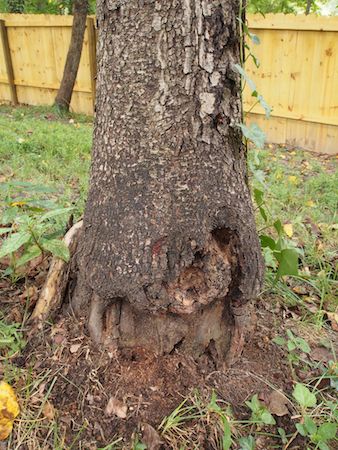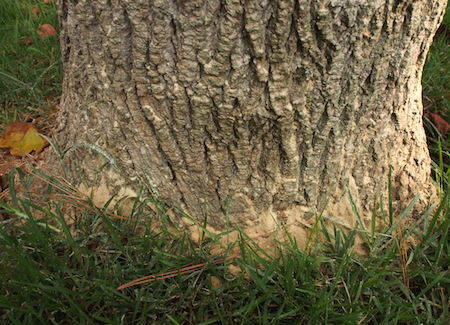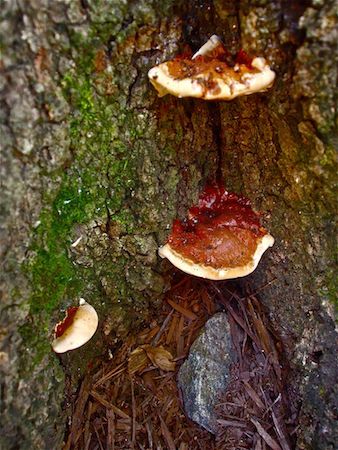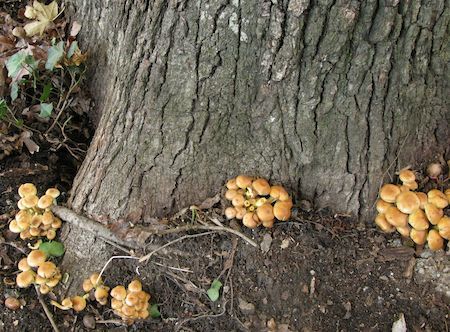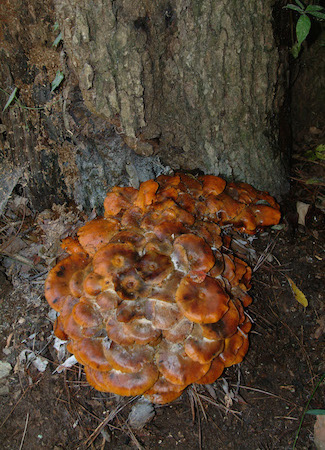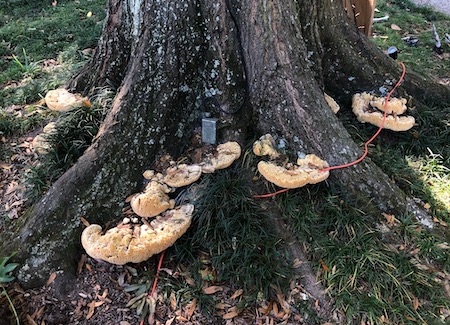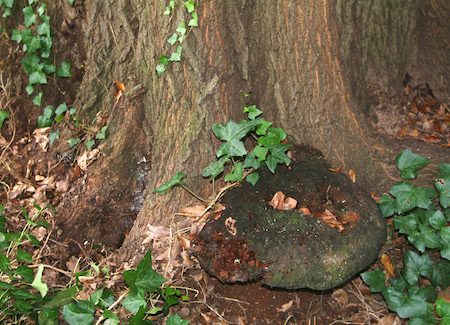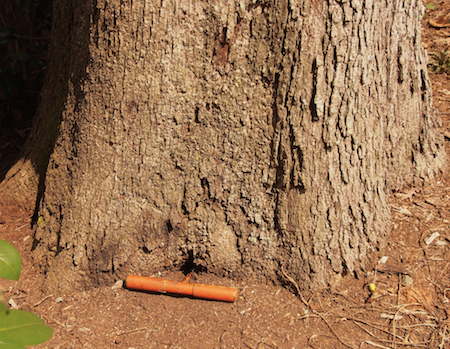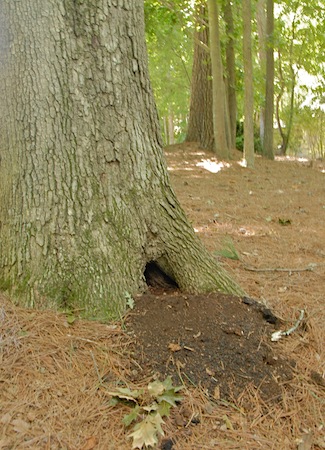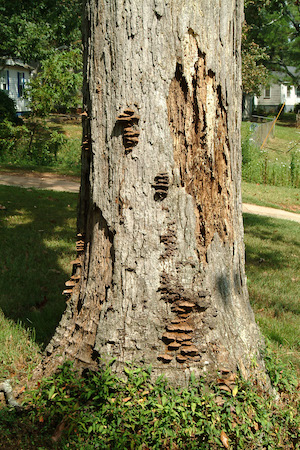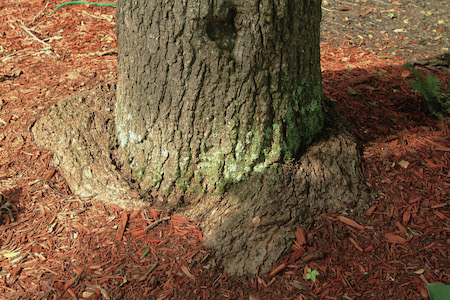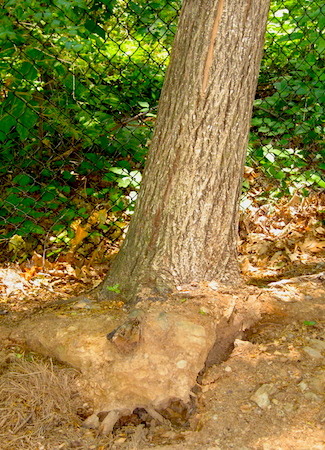Zone 2: The ground, including any visible roots and the first three feet up the trunk
There are two types of tree roots. The most visible are the large anchoring (structural) roots, which hold up the tree. The smaller and invisible absorbing roots provide the tree with water and nutrients from the soil. Even a tree that appears strong and vibrant with foliage can have serious root problems. Examine the base of the trunk and the ground around the bottom of a tree. It’s here that you may find your first evidence of root problems or other hazards.
- Pull back any ivy, mulch, or ground cover (watch out for poison ivy!) and look closely where the trunk meets the ground. If you see cracked or raised soil, the tree may be in the process of uprooting.
- Do you see fungus (mushrooms) on or near the tree's roots or trunk? Fungus is a strong indicator of root or trunk decay. And when a tree’s anchoring roots are rotting, decayed, or cut, the tree is at risk of falling over. If too much of the trunk is decayed, it can buckle or break.
Uprooting, root rot, and decay at the base of a tree can be very dangerous situations which require immediate attention. Call a Certified Arborist to help you determine whether the tree needs to be removed or whether it's safe to leave it standing.
Other things to look for in your Zone 2 inspection:
- Deep cavities (openings in the tree) near the ground are a bad sign. The tree could collapse if the trunk is missing too much wood at its base.
- Are there dead branches on the ground? If so, there will likely be more up in the tree, especially if your tree has never been cleaned out by a tree care professional. Hesitate before you walk under the tree if the ground is littered with dead branches. An arborist will usually spot dead branches you didn’t notice.
- Do you see coarse or fine sawdust (also called "frass") on the trunk or at the base of a tree? If so, the tree is getting attacked by borers (small beetles). A borer invasion will usually kill the tree. However, in some species it may be possible to save the tree if the insects are caught and treated early on. When you see frass, call a Certified Arborist immediately to find out why it's there and what it means for your tree.
- Do you see carpenter ants or termites at the base or on the lower trunk of your tree? Both of these insects only nest in wood that is already dead, so they are good indicators that there may be a problem inside the tree. Carpenter ants are usually seen on the outside of the trunk on the ground leading to the tree. Termites are difficult to spot because they die from the heat of sunlight, so they stay hidden underneath dead bark.
- Raised sections or cracks in the driveway or sidewalk caused by a tree's roots pose a risk to pedestrians. These need to be repaired so people don't trip or fall. Consult a Certified Arborist to learn how you can save your tree's roots while addressing the problem.

